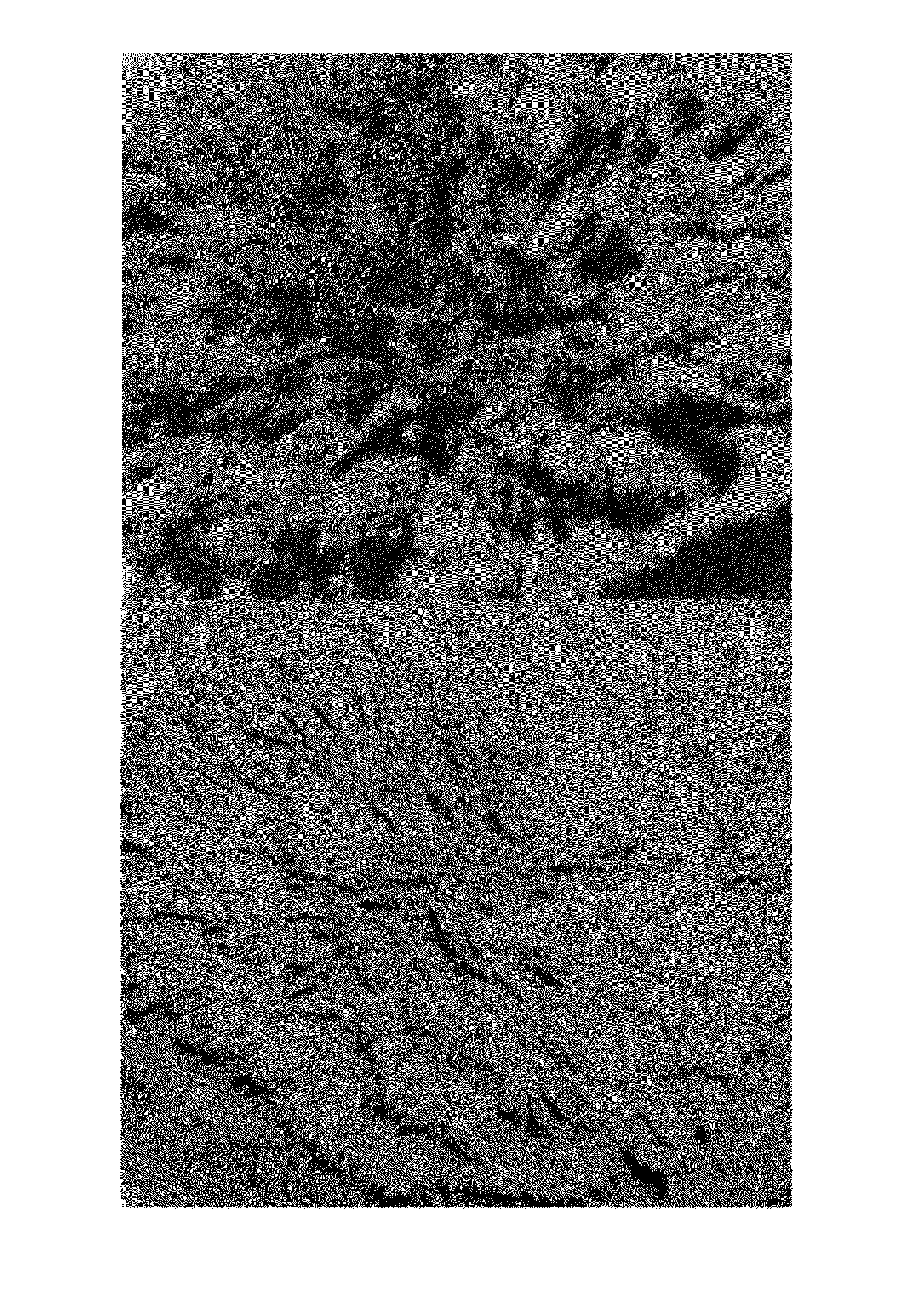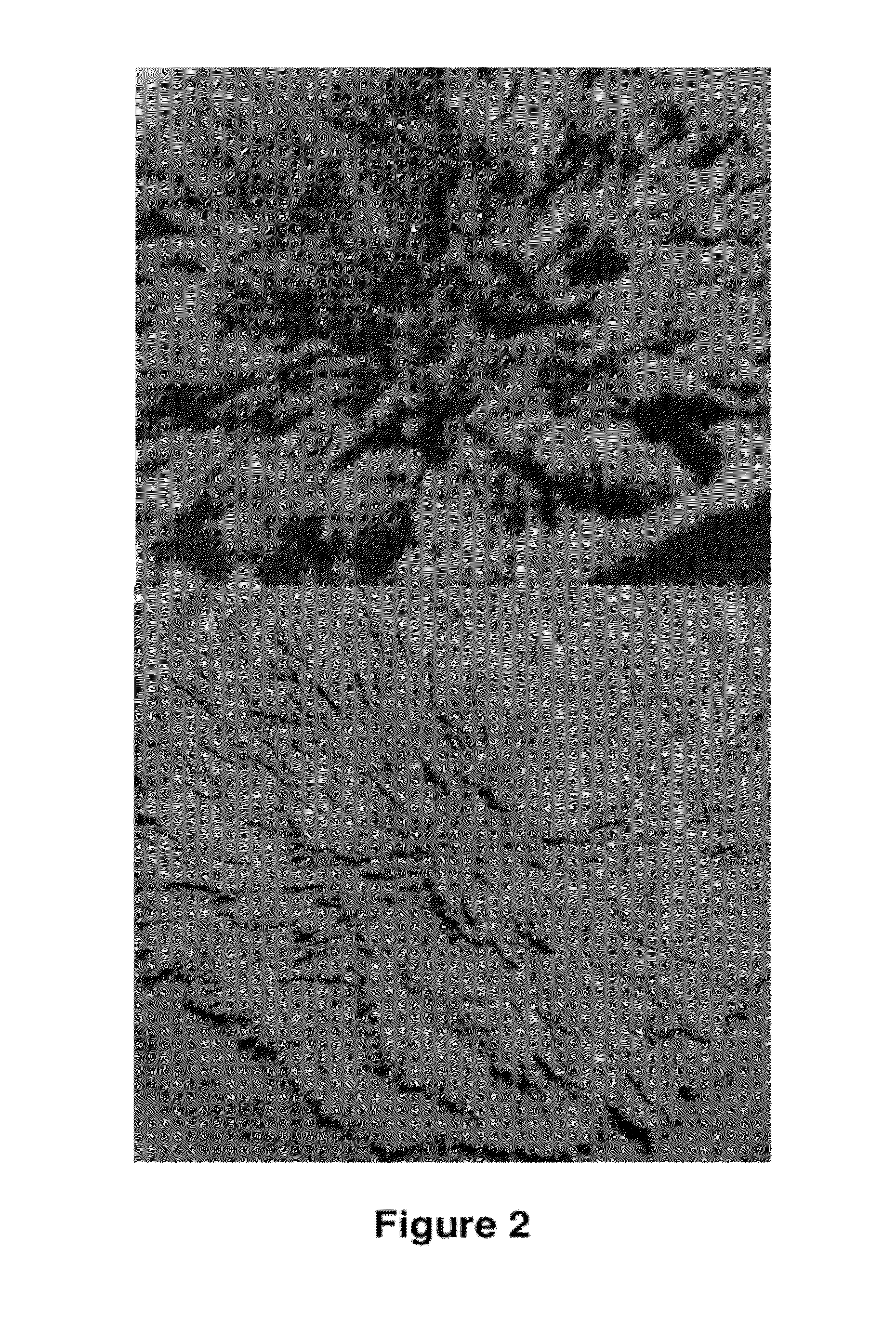Porous materials embedded with nanoparticles, methods of fabrication and uses thereof
a technology of porous materials and nanoparticles, applied in the field of porous materials embedded with nanoparticles, can solve the problems of inability to manufacture in an economical manner, inability to meet the requirements of operation, and large volume of absorbers, and achieve the effect of less labor-intensive production and easy implementation
- Summary
- Abstract
- Description
- Claims
- Application Information
AI Technical Summary
Benefits of technology
Problems solved by technology
Method used
Image
Examples
examples of preparation
Example 1
[0118]As a polymer precursor, 9 g of epoxy resin ED-20 (epoxy-diane resins formed by reaction of bisphenols A or F with epichlorohydrine) available from Chimex Ltd, St. Petersburg, Russia) and 1-2% mas of curing agent triethylenetetramine (TETA) (foaming at ambient temperature 20° C.) were mixed in a form with 2-5 mass parts of microspheres having bulk density of 200 kg / m3. After 7-8 minutes of through mixing, 1 to 3 g of commercially available nanoparticles of Fe R-10, (30 nm to 150 nm, initial μ2,000-3,000, specific permeability 0.1 MκOM / M) obtained by reaction Fe(CO)5=Fe+5CO, available from OAO Sintez, Nizhni Novgorod, were added and the mixing was continued for another 7 min. Then, the mixture was subjected to magnetic field having intensity around 300 mT at a distance of 0.5 mm from the surface, generated by a permanent magnet NbFeB (Hcj 880-1595 Ka / m), available from PolyMagnet Ltd, Moscow, and left for 20-180 min. See a magnetic field map used to prepare the articles...
example 2
[0123]As a polymer precursor, 10 g of epoxy resin ED-20 (epoxy-diane resins formed by reaction of bisphenols A or F with epichlorohydrine) available from Chimex Ltd, St. Petersburg, Russia) and 1.5-2.5% mas of curing agent triethylenetetramine (TETA) (foaming at ambient temperature 20 C) were mixed in a form with a foaming system consisting of 1.0-2.0 mass parts of liquid glass and 0.25-1.50 mass parts of A1 particles (10-50 mcm). After 3-5 minutes of through mixing, 10 to 30 g of commercially available nanoparticles of Fe R-10, (30 nm to 150 nm, initial μ 2,000-3,000) obtained by reaction Fe(CO)5=Fe+5CO, available from OAO Sintez, Nizhni Novgorod, were added and the mixing was continued for another 7 min.
[0124]Then, the mixture was subjected to magnetic field having intensity around 300 mT at a distance of 0.5 mm from the surface, generated by a permanent magnet NbFeB (Hcj 880-1595 Ka / m), available from PolyMagnet Ltd, Moscow, and left for 20-180 min. See a magnetic field map used ...
example 3
Preparation of a Polymer Composition Based on Polyurethane Granules, Nanoparticulate Filler and Solid Salicylic Acid as Blowing Agent
[0128]The composition is a foaming system of a well-known type comprising thermoset polymers of the type used with surfactants, blowing agents and a catalyst system. A typical core formulation may be as follows:
[0129]Nylon 12 Microporous foam embedded with manganese ferrite MnFe2O4 nanoparticles having size 1 nm to 30 nm.
[0130]Solid Nylon 12 pellets were heated with solid salicylic acid to form a 30% (by weight) isotropic solution while using mechanical stirring. About 10% of manganese ferrite nanoparticles were added under continuous stirring. A magnetic field of 2 T was applied in the direction transversely the axis of the mechanical mixer for a period of 30 minutes. After thorough mixing the solution was heated to about 190° C. in an inert atmosphere and the vessel was then quenched in liquid nitrogen. The solid foam obtained was washed with chlorof...
PUM
| Property | Measurement | Unit |
|---|---|---|
| frequencies | aaaaa | aaaaa |
| diameter | aaaaa | aaaaa |
| particle size | aaaaa | aaaaa |
Abstract
Description
Claims
Application Information
 Login to View More
Login to View More - R&D
- Intellectual Property
- Life Sciences
- Materials
- Tech Scout
- Unparalleled Data Quality
- Higher Quality Content
- 60% Fewer Hallucinations
Browse by: Latest US Patents, China's latest patents, Technical Efficacy Thesaurus, Application Domain, Technology Topic, Popular Technical Reports.
© 2025 PatSnap. All rights reserved.Legal|Privacy policy|Modern Slavery Act Transparency Statement|Sitemap|About US| Contact US: help@patsnap.com



